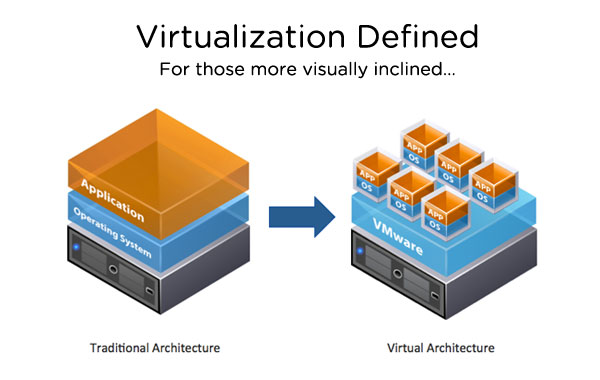
 Virtualization
Virtualization
What is Virtualization?
Virtualization addresses IT’s most pressing challenge: the infrastructure sprawl that compels IT departments to channel 70% of their budget into maintenance, leaving scant resources for business-building innovation.
The difficulty stems from the architecture of today’s X86 computers: they’re designed to run just one operating system and application at a time. As a result, even small datacenters have to deploy many servers, each operating at just 5% to 15% of capacity—highly inefficient by any standard.
 Virtualization software solves the problem by enabling several operating systems and applications to run on one physical server or “host.” Each self-contained “virtual machine” is isolated from the others, and uses as much of the host’s computing resources as it requires.
Virtualization software solves the problem by enabling several operating systems and applications to run on one physical server or “host.” Each self-contained “virtual machine” is isolated from the others, and uses as much of the host’s computing resources as it requires.
How Virtualization Works
The heart of virtualization is the “virtual machine” (VM), a tightly isolated software container with an operating system and application inside. Because each VM is completely separate and independent, many of them can run simultaneously on a single computer. A thin layer of software called a hypervisor decouples the VMs from the host, and dynamically allocates computing resources to each VM as needed.

